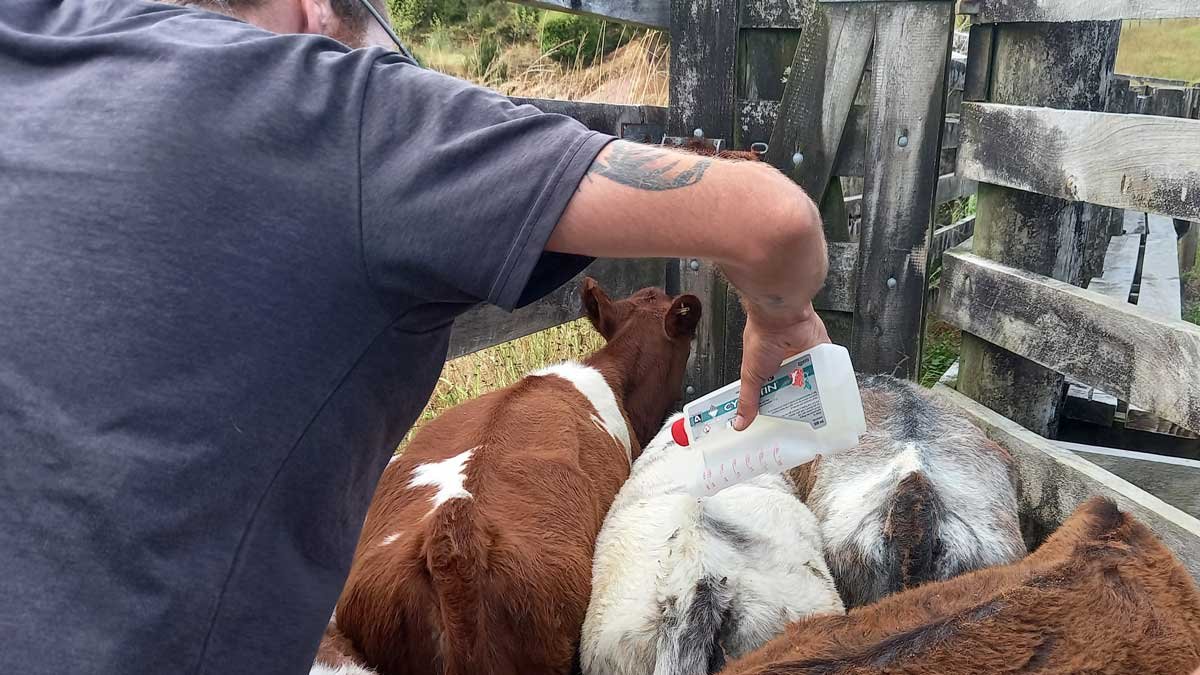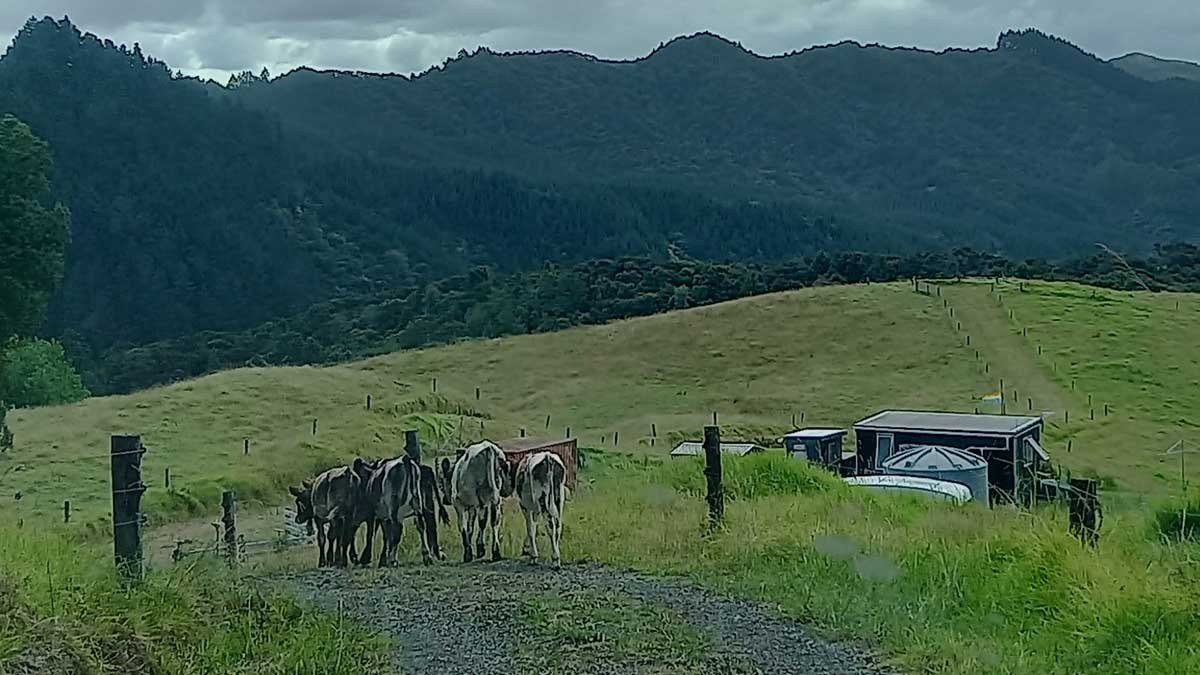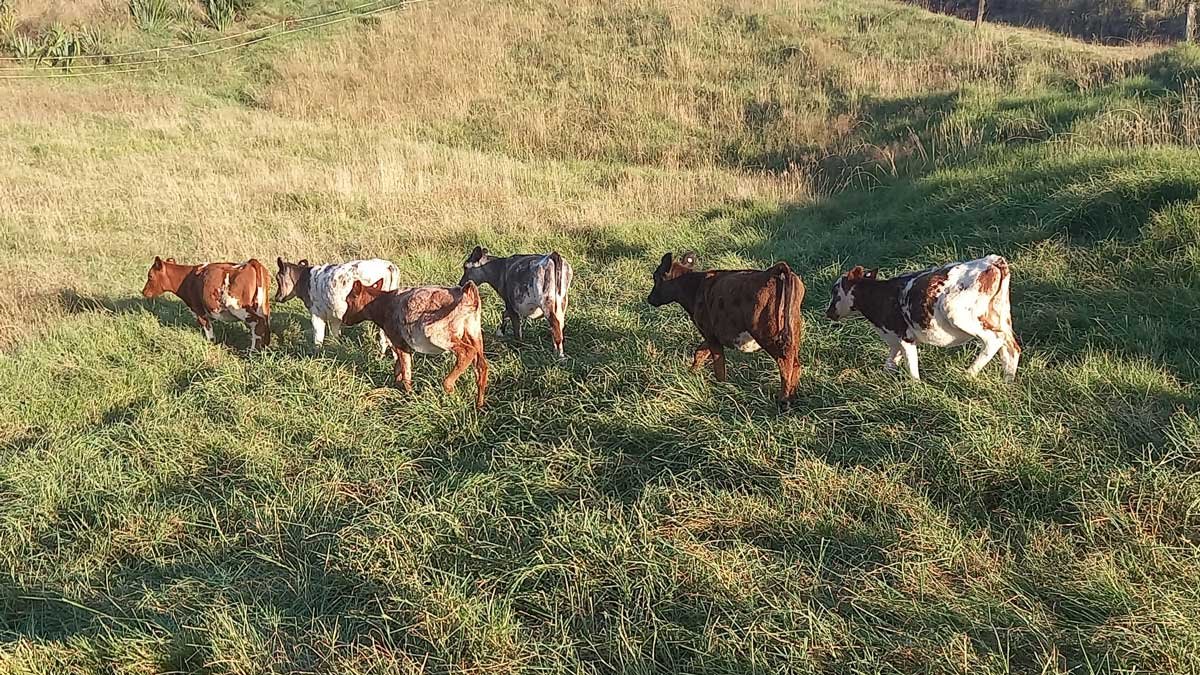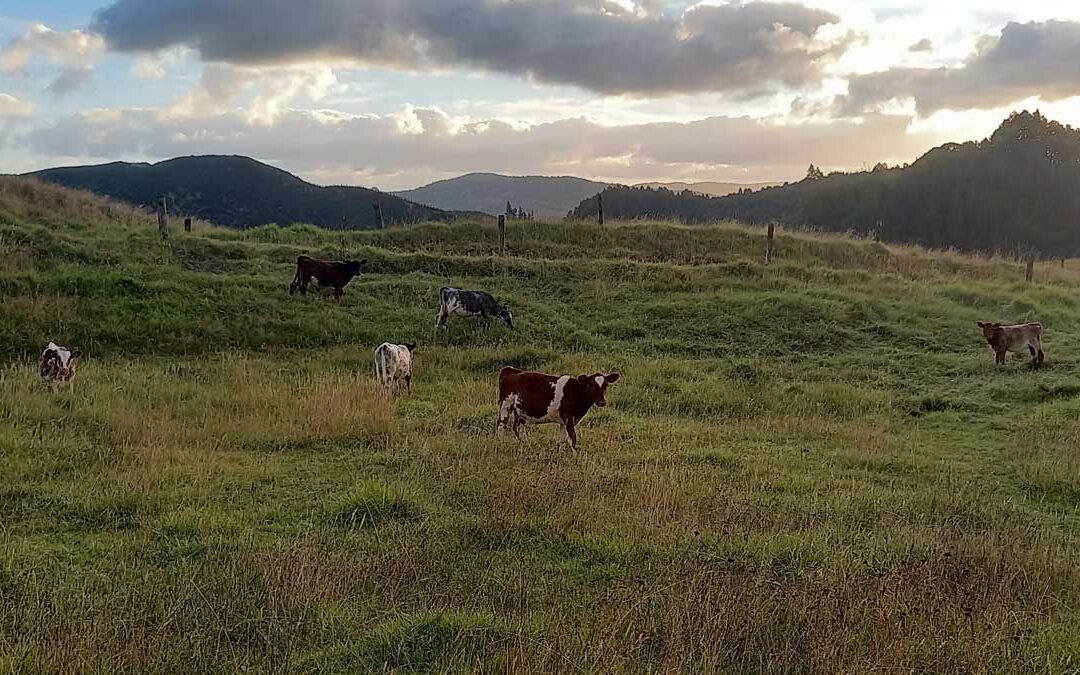This week our third herd of cows arrived at The Outpost. If you’d told me 20 years ago I would one day get a bit of a kick out of buying and selling cows, I wouldn’t have believed you. And yet, here we are.
When we purchased the property, it came with four Murray Grey cows – 2 steers and 2 heifers. A year later, we noticed a lot of erosion going on in our (hilly) paddocks. We knew it was time for them to leave, but we had no idea of how to go about it.
Luckily, a neighbouring farmer did us a favour and introduced us to his stock agent, and he’s the brilliant man who has helped us get our heads around this game.
In September 2020, we sold our original cows to AFFCO. Truth be told, I still think about that decision. It was the right call at the time, but occasionally I think of those cows and I do feel pretty stink about it.
Still, we learned what a cow could be worth. It’s certainly a better place for money than most other investments if you time it right and have the grass to feed them. It’s about this time I began referring to the cattle as ‘savings accounts’.
Our agent sent us our second herd in October 2020. They were a bunch of skinny 15 month-olds. The region was already facing drought and farmers were de-stocking, so we got them at a very good price. They were all Angus heifers, and this time we increased our numbers to 6 in an effort to better control our grass.
That turned out to be the right number of cows. They did a good job of keeping the grass down without overgrazing, but a little over a year later they were reaching 450kg and the erosion had started again.
Prices were high. This time our agent sold them on our behalf at the sales. The money wasn’t quite as good (the base rate is about the same, but there are more fees to pay), but I can also sleep a little sounder imagining Licker and her pals are still living happily somewhere on less erosion-prone paddocks.
And then we watched the grass grow for a couple of months.
Between the traditional Kiwi summer break over Christmas and high cattle prices, we decided to hold off before buying some more. The grass began reaching our thighs in places.
Then last week, our wonderful stock agent let me know that he had some dairy-mixes coming in that would fit our purchasing budget. There’s a lot of things you could consider when buying, but mostly I’m concerned about the price.
The weather has been pretty good this summer and prices are still fairly high. So the compromise would be in the size/age of cow we were purchasing. Our grass was reaching about our limit, so we decided to go for it.
On Wednesday afternoon, the transport truck dropped off 6 very small and skinny four month-old calves.

We gave them a drench and drove them slowly from the yards down to our place.

I’m always careful and kind with cows when they arrive – going to the sales is a big and stressful day for them.
They start the day on the seller’s farm; get put on a truck and driven to the saleyards where they spend the day; then in the afternoon, they’re loaded onto a truck and dropped off at the buyer’s farm.

For any cow – but especially a four month-old calf – that must be quite a lot. So when they arrive I begin by introducing myself. I don’t yell.
I welcome them and make sure there is a mineral salt block waiting in their paddock. I’ve said it before, but I want them to have a happy life while they’re here.

They got stuck into our long grass right away, and have been slowly eating down a smallish section of our main paddock since they arrived.
They’re a bit shy, making good photos kind of difficult. But because they’re so young, we have a chance to make them friendly. This would be handy as we have to drench them every 6 weeks until their immune systems are better able to deal with parasites naturally.
If we can do that over the fence, it’s a lot easier than running them a kilometer up the driveway to the stockyards.

So we’re visiting them daily with offerings of tomatoes, tagasaste branches, silverbeet, cabbage, strawberries, and whatever else we can rustle up. At the moment we’re just dropping them off, but we’re hoping they’ll start looking forward to these visits and come to meet us in time.
Our third herd will be with us for 18-24 months. By the time they’re ready to say goodbye, they will have put on about 350-400kg of weight. They’ll literally be five times the size they are now.

We’ve got plenty of grass for them to eat, and we can allow them to be here with a mostly-positive effect on the land. It’s not a perfect system, and I always feel conflicted about saying goodbye, but that’s a while down the track yet.
So for now we’ll concentrate on giving them happy lives and lots of good food while they’re here.


